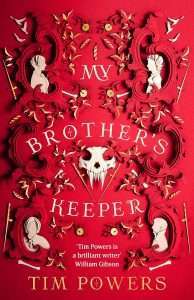Adrian Collins's Blog, page 73
December 15, 2023
REVIEW: The Sword Defiant by Gareth Hanrahan
Last Updated on December 15, 2023
In The Sword Defiant, The Nine, a group of adventurers, faced down the threats of the Wilders, the Witch Elves, and Lord Bone and overthrew the evil city of Necrad. It cost them the life of Peir the Paladin, but the heroes won. The survivors swore an oath to defend and rule the city of Necrad. Twenty years later, and their victory has turned sour.
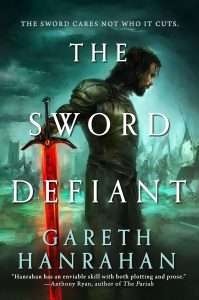 The Sword Defiant is the new series by Gareth Hanrahan, author of The Black Iron Legacy series. His previous series was filled with strange and unique elements, creating a fascinating but alienating setting. This one, despite a few touches, is intentionally filled with the tropes of more traditional fantasy: Elves, dwarves, wizards, clerics, paladins, and so on. The protagonist, Aelfric, is a veteran warrior of the Nine with a talking magic sword he took from one of Lord Bone’s lieutenants.
The Sword Defiant is the new series by Gareth Hanrahan, author of The Black Iron Legacy series. His previous series was filled with strange and unique elements, creating a fascinating but alienating setting. This one, despite a few touches, is intentionally filled with the tropes of more traditional fantasy: Elves, dwarves, wizards, clerics, paladins, and so on. The protagonist, Aelfric, is a veteran warrior of the Nine with a talking magic sword he took from one of Lord Bone’s lieutenants.
The Sword Defiant was inspired partially by the Tolkien quote:
“The real war does not resemble the legendary war in its process or its conclusion. If it had inspired or directed the development of the legend, then certainly the Ring would have been seized and used against Sauron; he would not have been annihilated but enslaved, and Barad-Dûr would not have been destroyed but occupied.”
Necrad, city of spawning horrors, was not destroyed but occupied by the heroes. The survivors of the Nine are now rulers of Necrad, forced to deal with the thousand cuts of bureaucracy and diplomacy. A few are adept at playing the game, but ruling is a far cry from the heroic combat of their youth. Aelfric, for his part, spends much of his time in the Pits, where creatures continue to spawn, to stem their tide so they cannot make their way to the surface. The dwarves and elves and Berys, who had been the thief of the Nine, keep pushing for their own advancement, and Blaise, the wizard, has largely locked himself away in his tower.
The other point of view in The Sword Defiant is Aelfric’s sister Olva. She leaves home after her son is convinced to go meet his famous uncle and promptly gets himself kidnapped. Her plot is much more of the traditional travelogue of classic fantasy, seeing new places, meeting with new allies, and dealing with threats on the road. The largest change is that she is a mature woman old enough to have a fully grown son. When both siblings finally meet up, the book became significantly stronger.
The characters slot very much into established tropes. Aelfric is the world-weary warrior who will keep persevering, and may stumble into traps because he’s not the plotting type. The best part of The Sword Defiant is his semi-antagonistic relationship with his talking sword, Spellbreaker (the eponymous defiant sword). His best friend among the Nine is the dwarven warrior, but even the ones he is more concerned by he still views as one of the Nine, and he won’t move against them. He mourns Peir the Paladin, who he believes could have kept even as vile a city as Necrad moving in a positive direction.
The world-building has enough twists on established tropes to be enjoyable. The elves live forever, and if they’re mortally wounded they’ll simply linger in the spirit realm until they can walk free again. There is an endless war between the Wood Elves and the Witch Elves, but the Wood Elves very much want to forgive their kin. The vatlings can only exist in Necrad, but are much friendlier and don’t seem like any of the other creatures spawned out of the city. Necrad itself is filled with magical treasures that are being looted and smuggled out to those willing to pay, despite the dangers those magics pose. The Sword Defiant uses our knowledge of what a traditional fantasy setting should be like so it can sketch in the details and let our knowledge take over from there.
If anything, the setting and scenario feels like something out of a fun, engaging tabletop RPG campaign. The characters all have races and classes straight from Dungeons and Dragons or Pathfinder, and Aelfric’s routine involves going into a dungeon that’s constantly filling with new monsters. Aelfric is able to take on nearly any threat with or without Spellbreaker; clearly he’s leveled up.
But it’s much harder for Aelfric to battle the Nine, his former companions, whether or not the group is splintering, and whether or not they’ve become monsters.
Read The Sword Defiant by Gareth HanrahanThe post REVIEW: The Sword Defiant by Gareth Hanrahan appeared first on Grimdark Magazine.
December 13, 2023
Romantasy for Grimdark Fans
Yes, you read the title right. We here at Grimdark Magazine are always on the hunt for quality grimdark books. This is not without some challenges. Ask ten people what grimdark is and you’ll have ten different answers. However, certain characteristics have traditionally indicated books in our wheelhouse. We want stories with dark settings, grey characters, and plenty of fucking grit. Books like The First Law Series and Empires of Dust are what makes our black hearts swoon.
Make no mistake, romance is off kilter for us. It’s not something we look for, many of us actively avoid. And yet, as the grimdark team discussed our favorite books, we noticed some had romance as a strong plotline.
This is not your typical romantasy list. None of the characters referenced here will ever win “couple of the year”. These books feature unconventional romance with grimdark staked through its heart. If you are looking for something bleak, violent, and spicy we have you covered.
Black Stone Heart by Michael R. Fletcher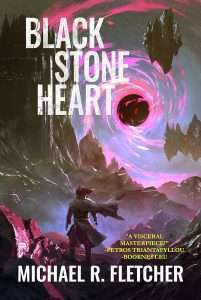 Known for his twisted characters, intricate worldbuilding, and being unapologetically gritty, Michael R. Fletcher needs to be in your grimdark library. His The Obsidian Path series is no exception. For those who detest romance, Black Stone Heart may just change your mind.
Known for his twisted characters, intricate worldbuilding, and being unapologetically gritty, Michael R. Fletcher needs to be in your grimdark library. His The Obsidian Path series is no exception. For those who detest romance, Black Stone Heart may just change your mind.
The main character Khraen is a hollowed man. His memory shattered into vague, distorted images, an innate calling drives him south to recover his identity. Khraen’s journey is one of death, but he doesn’t walk it alone. A powerful force hunts him and wants him to remember. She is the key to understanding who he is. Her love may destroy him entirely. The Obsidian Path Series is brimming with bloodshed and violence, which coincidentally, Michael R. Fletcher made both important aspects in Khraen’s relationship.
Read the full review here.
About the BookTHE FIRST STEP ON THE OBSIDIAN PATH
A broken man, Khraen awakens alone and lost. His stone heart has been shattered, littered across the world. With each piece, he regains some small shard of the man he once was. He follows the trail, fragment by fragment, remembering his terrible past.
There was a woman.
There was a sword.
There was an end to sorrow.
Khraen walks the obsidian path.
Read Black Stone Heart by Michael R. FletcherThe Court of Broken Knives by Anna Smith Spark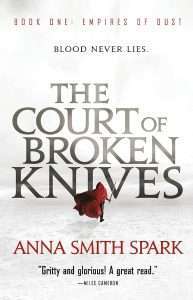 The debut The Court of Broken Knives crowned Anna Smith Spark as Queen of Grimdark. Her writing portrays violence as grace. A poetry of death. Gloriously and achingly traumatic.
The debut The Court of Broken Knives crowned Anna Smith Spark as Queen of Grimdark. Her writing portrays violence as grace. A poetry of death. Gloriously and achingly traumatic.
Marith and Thalia’s relationship in The Court of Broken Knives is just as hypnotizing. By the blood on their hands, her characters find solace in each other. By divine right, their legacy is death. Their love is a humble flicker in the flames of war but that will not save them.
“It always comes back to death and dying. Always. Everything.”
Read the full review here.
About the BookIt is the richest empire the world has ever known, and it is also doomed — but only one man can see it. Haunted by prophetic dreams, Orhan has hired a company of soldiers to cross the desert to reach the capital city.Once they enter the palace, they have one mission: kill the emperor, then all those who remain. Only from the ashes can a new empire be built.The company is a group of good, ordinary soldiers for whom this is a mission like any other. But the strange boy Marith who walks among them is no ordinary soldier. Though he is young, ambitious, and impossibly charming, something dark hides in Marith’s past — and in his blood.
Read The Court of Broken Knives by Anna Smith SparkFourth wing by Rebecca YarrosFourth Wing 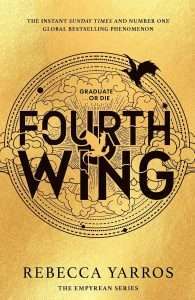 by Rebecca Yarros went viral upon its release but do not mistake this book for another Harry Potter or Hunger Games. The main character Violet Sorrengail is clever and possesses enough snark to rival Gideon from the Locked Tomb series. She will need all of her cunningness if she is to survive training to become a dragon rider. A training program where students are required to “eliminate” any weaknesses, including their classmates.
by Rebecca Yarros went viral upon its release but do not mistake this book for another Harry Potter or Hunger Games. The main character Violet Sorrengail is clever and possesses enough snark to rival Gideon from the Locked Tomb series. She will need all of her cunningness if she is to survive training to become a dragon rider. A training program where students are required to “eliminate” any weaknesses, including their classmates.
Fourth Wing aligns more with traditional romantasy novels but grimdark readers will be pleased with Rebecca Yarros’s complex characters. This is not a good vs evil narrative. The relationships that develop throughout the novel are given the same intricacy. Alliances will shatter. Bonds will form between enemies. As one can expect, survival is morally gray business.
Read the full review here.
About the BookTwenty-year-old Violet Sorrengail was supposed to enter the Scribe Quadrant, living a quiet life among books and history. Now, the commanding general—also known as her tough-as-talons mother—has ordered Violet to join the hundreds of candidates striving to become the elite of Navarre: dragon riders.
But when you’re smaller than everyone else and your body is brittle, death is only a heartbeat away…because dragons don’t bond to “fragile” humans. They incinerate them.
Read Fourth wing by Rebecca YarrosSummer Sons by Lee Mandelo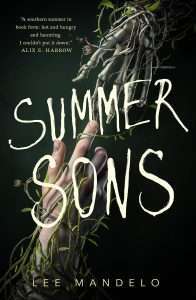 Lee Mandelo wrote magic with Summer Sons. This gripping novel delicately blends southern gothic horror with queer romance. Summer Sons follows Andrew as he races to find the real cause of his best friend’s death. He alone does not believe Eddie committed suicide. Determined to find answers, Andrew discovers something more sinister.
Lee Mandelo wrote magic with Summer Sons. This gripping novel delicately blends southern gothic horror with queer romance. Summer Sons follows Andrew as he races to find the real cause of his best friend’s death. He alone does not believe Eddie committed suicide. Determined to find answers, Andrew discovers something more sinister.
Summer Sons offers a realistic take on self-discovery and acceptance through Andrew’s story. The romance is a slow burn with its most important aspect as the journey. Lee Mandelo does a fantastic job showcasing their characters’ grief and how it impacts relationships.
Read the full review here.
About the BookAndrew and Eddie did everything together, best friends bonded more deeply than brothers, until Eddie left Andrew behind to start his graduate program at Vanderbilt. Six months later, only days before Andrew was to join him in Nashville, Eddie dies of an apparent suicide. He leaves Andrew a horrible inheritance: a roommate he doesn’t know, friends he never asked for, and a gruesome phantom that hungers for him.
Read Summer Sons by Lee MandeloThe Last Tale of the Flower Bride by Roshani Chokshi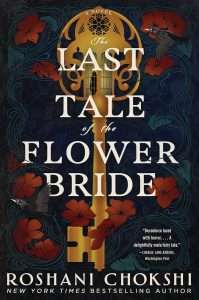 The Last Tale of the Flower Bride is its own vibe. Roshani Chokshi’s haunting and enchanting debut features an unforgettable romance. A romance sprung from lies and secrets. Indigo Maxwell-Casteñada’s past is shrouded in mystery, even her husband is not privy. When circumstances call for her to return to her childhood home, her buried past surfaces. The skeletons buried in her closet have come to claim her life.
The Last Tale of the Flower Bride is its own vibe. Roshani Chokshi’s haunting and enchanting debut features an unforgettable romance. A romance sprung from lies and secrets. Indigo Maxwell-Casteñada’s past is shrouded in mystery, even her husband is not privy. When circumstances call for her to return to her childhood home, her buried past surfaces. The skeletons buried in her closet have come to claim her life.
“In fairy tales, a kiss marks a threshold-between the state of being cursed or cured lies a kiss. But not all kisses cure; some kill.”
The romance in The Last Tale of the Flower Bride captures the essence of fairy tale. It’s captivating from the first page and doesn’t stop. Indigo Maxwell-Casteñada is the physical manifestation of allure.
Read the full review here.
About the BookOnce upon a time, a man who believed in fairy tales married a beautiful, mysterious woman named Indigo Maxwell-Casteñada. He was a scholar of myths. She was heiress to a fortune. They exchanged gifts and stories and believed they would live happily ever after—and in exchange for her love, Indigo extracted a promise: that her bridegroom would never pry into her past.
But when Indigo learns that her estranged aunt is dying and the couple is forced to return to her childhood home, the House of Dreams, the bridegroom will soon find himself unable to resist. For within the crumbling manor’s extravagant rooms and musty halls, there lurks the shadow of another girl: Azure, Indigo’s dearest childhood friend who suddenly disappeared. As the house slowly reveals his wife’s secrets, the bridegroom will be forced to choose between reality and fantasy, even if doing so threatens to destroy their marriage . . . or their lives.
Read The Last Tale of the Flower Bride by Roshani ChokshiLegacy of the Brightwash by Krystle Matar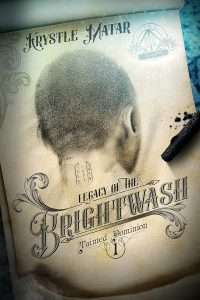 Legacy of the Brightwash is a narrative of death and sorrow. An aching journey told from the scars of addiction and violence. These characters are complex. Real. They feel love. They suffer loss. Krystle Matar didn’t write a fast-paced action thriller. She details how a person’s spirit shatters and its aftermath.
Legacy of the Brightwash is a narrative of death and sorrow. An aching journey told from the scars of addiction and violence. These characters are complex. Real. They feel love. They suffer loss. Krystle Matar didn’t write a fast-paced action thriller. She details how a person’s spirit shatters and its aftermath.
Tashué and Stella are both parents faced with the impossible task of protecting their children from the totalitarian regime that is the Authority. Against their better judgment, they’re falling in love. While their bond offers a sliver of hope, it makes them an immediate target. Their love will either save or catapult them to self-destruction.
Read the full review here.
About the BookTashué’s faith in the law is beginning to crack. Three years ago, he stood by when the Authority condemned Jason to the brutality of the Rift for non-compliance. When Tashué’s son refused to register as tainted, the laws had to be upheld. He’d never doubted his job as a Regulation Officer before, but three years of watching your son wither away can break down even the strongest convictions.
Then a dead girl washed up on the bank of the Brightwash, tattooed and mutilated. Where had she come from? Who would tattoo a child? Was it the same person who killed her? Why was he the only one who cared?
Will Tashué be able to stand against everything he thought he believed in to get the answers he’s looking for?
Read Legacy of the Brightwash by Krystle MatarThe post Romantasy for Grimdark Fans appeared first on Grimdark Magazine.
December 12, 2023
REVIEW: Angus McSix
Angus McSix is a symphonic power metal band formed by Gloryammer’s former lead vocalist Thomas Winkler (stage name previously Angus McFife). As a longtime Gloryhammer fan, the band’s acrimonious split was painful to read and there’s a lot of things that we could discuss but I’m not going to.
Well, maybe a little. Thomas landed on his feet with Napalm Records who, instead of seeing this as a potential danger to one of their biggest cash cows, saw the chance to get two ridiculous fantasy themed bands out of the split instead of just having one. Angus McSix the band would be formed from Manu Lotter (Rhapsody of Fire), Thalia Bellazecca (Frozen Crown), and Sebastian “Seb” Leverman (Orden Ogan). Which is to say they’re all veterans of Heavy Mirthil music and a power team of power metal.
We could discuss the behind-the-scenes details all day but you’re probably here to learn about the music. Is it good? No, it’s fantastic and I think Angus McSix and the Sword of Power is even better than anything Gloryhammer managed to put out–and I love Gloryhammer. Hell, I love their newest album put out as a rival to this album, Return to the Kingdom of Fife. However, if we’re going to say who wins this rock off then Winkler and crew are clearly the victors.
As a concept album, there’s a story behind the music and it is a divergent timeline from Gloryhammer with Angus McSix stating (without stating it directly) that the character of Angus McFife was resurrected after the events of Legends from Beyond the Galactic Terrorvortex. Angus is transported to the future to battle the evil wizard Seebus, takes up the magic sword Sixcalibur to replace his hammer (because “glory left his hammer” is in the lyrics), and wackiness ensues.
The plots are always cheesy and fun but surprisingly coherent for these albums. Thomas clearly considers himself to own as much of the Angus story as Gloryhammer but goes his own direction with it that safely distances their continuities. Though if you worry about the continuity of heavy metal albums, you are even nerdier than me and I write post-apocalypse Cthulhu and superhero fiction.
Ahem.
Right, the music!
I mean there’s no bad songs on this album. Every one of them is a banger except for “Fireflies of Doom” and “Ride to Hell.” Even then, that’s just because they’re less awesome than the rest of the album’s songs. If I had to pick out the standout song of the album, it’s undoubtedly “Master of the Universe”, which is the opening track and introduces the plot as well as lovingly homages a certain cartoon show.
“Eternal Warrior”, “In a Past Reality”, “Amazons of Caledonia”, “Laser Shooting Dinosaur”, and “The Star Lord of The Sixtus Stellar System” are all great. “Laser Shooting Dinosaur” is the only one that is really outright wacky, and the others are surprisingly coherent in their fantasy universe’s rules. Thomas seems to take his universe slightly more seriously but not too serious. Still, bonus track “Just a Fool Will Play Tricks on Angus McSix” is a song about Angus destroying the goblin race for screwing with him so there might be something to his attitude behind-the-scenes. Even the intro, “The Vision in the Fires” is really good instrumental work.
Overall, this is a great album and well worth the purchase price. Everyone is extremely talented and with rare exceptions, it’s more on the hard rock side of thing than the synthesizer to everyone’s credit. Major props.
The post REVIEW: Angus McSix appeared first on Grimdark Magazine.
December 11, 2023
REVIEW: The Atrocity Archives by Charles Stross
This is going to be an extremely biased review, not for the usual reasons of childhood nostalgia, however. I am a huge fan of the Cthulhu Mythos, spy fiction, and black comedy. The Laundry Files are all of this and takes the p*** out of a lot of HPL’s biases in its opening chapters in a way that doesn’t distract from the story.
 The Atrocity Archives is set in a world superficially like H.P. Lovecraft’s Cthulhu mythos, only set in the present day and protected by a series of government conspiracies. These government conspiracies are not glamorous martini-drinking S.H.I.E.L.D analogues or even sinister X-files-esque conspiracies. No, instead, they’re a bunch of bored civil servants almost smothered by bureaucracy.
The Atrocity Archives is set in a world superficially like H.P. Lovecraft’s Cthulhu mythos, only set in the present day and protected by a series of government conspiracies. These government conspiracies are not glamorous martini-drinking S.H.I.E.L.D analogues or even sinister X-files-esque conspiracies. No, instead, they’re a bunch of bored civil servants almost smothered by bureaucracy.
The protagonist, Bob Howard, is more or less the opposite of your typical spy novel hero. He’s neither suave, debonaire, or particularly dangerous. He is, however, frighteningly good at mathematics. Math is the basis of magic in the setting and the book is littered with complicated mathematical models which might or might not be accurate but blow my mind. Bob manages a comfortable everyman sort of hero and you believe in him as he struggles to be a field agent.
Indeed, what I like about Bob most is his unflappability in the face of mind-numbing horrors but complete bewilderment by mundane problems. Dealing with Cthulhu and Yog-Sothoth is Bob’s job but the accounting department is beyond him. There’s something to be said for being able to adjust to anything but your fellow humans and their trivialities.
Another thing I like is the book goes in unexpected directions. Without spoiling, the book touches on everything from Pulps to Norse mythology to what appears to sitcom romance without skipping a beat. There’s few other places you can find Nazi plots, critiques on British CCTV spying, gorgons, and frost giants. The Atrocity Archives is divided into two novellas with separate stories, and both are highly entertaining.
My favorite character from the book other than Bob is probably Dominique “Mo” O’Brien who is, ostensibly, the protagonist’s love interest. Truth be told, I’m not sure if they’re together or not since Bob is a bit of a nerd but certainly more effective with the ladies than most. Also, compared to some of his coworkers, he’s positively James Bond. Whatever the case, she transcends this role in several places and is arguably a more interesting character.
I think the best element in the book, however, is not a character at all. The Laundry, the codename for the British department which deals with the supernatural, is an amazing creation. It manages to combine dull tedious bureaucracy, Lovecraft’s abomination, magic, SIS, and pure insanity into one coherent whole. You could imagine working for the Laundry and it would either be deeply fulfilling or horrible beyond imagination.
In conclusion, The Atrocity Archives amuses me to no end. I read this book not just when it came out but muktiple times since then as well as all the sequels. Just note that, occasionally, the technobabble gets a bit insufferable (especially about mathematics).
Read The Atrocity Archives by Charles StrossThe post REVIEW: The Atrocity Archives by Charles Stross appeared first on Grimdark Magazine.
December 10, 2023
REVIEW: Creepshow: Holiday Special #1
Way back in the late 1980s there was a UK gaming magazine called GM – The Independent Fantasy Roleplaying Magazine that somehow wended its way to Australia for your reviewer’s grubby little hands to paw over. It featured a lot of roleplaying material, plus interviews with fantasy/horror/science fiction writers who were big at the time. It also included fiction from some of the big names at the time (Gemmell and Pratchett amongst others), including my first exposure to a Christmas themed horror story. The character of Santa Claws featured, and you can tell where a story like that ended – blood on the mistletoe, that’s for sure.
 So it’s wonderful to read Creepshow: Holiday Special #1. Daniel Kraus opens proceedings with the deliriously outrageous ‘Christmas Man.’ where the power of imagination comes back to devour the unwary. On Christmas Eve, young Esme, a true devotee of all things Santa Claus, is baited by her bored older cousins who tell her a shaggy dog story about Christmas Man and his monstrous efforts to topple the empire Santa has built across the world. As the cousins’ story becomes more outrageous, the artwork by Jonathan Wayshak doubles down on the exaggerated atmosphere, to brilliant effect.
So it’s wonderful to read Creepshow: Holiday Special #1. Daniel Kraus opens proceedings with the deliriously outrageous ‘Christmas Man.’ where the power of imagination comes back to devour the unwary. On Christmas Eve, young Esme, a true devotee of all things Santa Claus, is baited by her bored older cousins who tell her a shaggy dog story about Christmas Man and his monstrous efforts to topple the empire Santa has built across the world. As the cousins’ story becomes more outrageous, the artwork by Jonathan Wayshak doubles down on the exaggerated atmosphere, to brilliant effect.
‘Christmas Man’ is a balls-out hilarious story of over the top excess being repaid in kind. The artwork is never what you would call subtle, full of close ups of gurning faces to ram home the impact of the story on Esme’s tender psyche. The way the cousins are depicted telling the story, with their bodies contorted and filling the frame, adds to the impact of their tale.
When the lights are out and the household is asleep, Kraus launches into a truly twisted version of ‘The Night Before Christmas’ depicting how the true horror of the cousin’s taunting comes to vicious and bloody life. Big shout out to colourist Adriano Lucas, without whom the story would lack its visceral impact.
Creepshow: Holiday Special #1 leaps into its second story, ‘Package Thieves.’ Watch enough videos on social media and eventually you’ll come across a genre devoted to those lovely people who steal packages left on the householder’s front porch while they’re away from home. Written by James Asmus and illustrated by Litizia Cadonici (that’s a name that rolls off the tongue in a really festive way!) ‘Package Thieves’ features Holly and Joy (get it? It’s Christmas, people!) who have a nice sideline in porch piracy. Except…this festive season, they’ve stumbled across packages that contain, shall we say, more personal items? Like, an eye to begin with, and later…a heart?
Holly’s friend Joy is that person who always has a reason to excuse their actions. ‘The online retailers will replace what we’ve stolen’, or ‘we’re sticking it to the MAN’ or…’I just want to make money without earning it!’ Creepshow: Holiday Special #1, if nothing else, is designed to strip away the pretensions of those of us who think the holiday season is just one long jolly joke. Behind the platitudes and festive imagery, linger darker, more noisome facts about the world and the people in it.
It then comes as no surprise then that Joy and Holly get their comeuppances in a truly grotesque, and indeed, earned way. Ho ho ho!
Creepshow: Holiday Special #1 is an excellent issue, filled with just the right amount of festive frights to get you into the mood for this season of thrilling…errr, giving. Down here in Australia, Christmas is blue skies, hot weather, and time for a dip in the pool after devouring a groaning table of food. But for our Northern Hemisphere compadres, as the nights grow longer, as sun rides lower and more feebler in the sky, as the darkest of dark myths and legends emerge to stalk the world, Creepshow: Holiday Special #1 is the perfect accompaniment. Buy now, or pay later!
5/5 stars
Read Creepshow: Holiday Special #1The post REVIEW: Creepshow: Holiday Special #1 appeared first on Grimdark Magazine.
December 9, 2023
REVIEW: Alan Wake Remastered
Alan Wake was a third person shooter I missed on its first release. It’s described on the box as an action psychological thriller. That’s a bit of a mouthful and I would have just called it an action horror game. I picked it up well before Alan Wake 2‘s release but feel like revisiting this classic before doing my review of the sequel seems to be a good idea.
This review is going to be generally positive since, well, I’ve bought the original and the Remastered version over the years and wouldn’t have if I didn’t like it that much. For the purposes of this review, this will be a review of Alan Wake: Remastered version but the differences amount to, “all of the DLC and better visuals.”
The game follows the titular character as he travels to a Twin Peaks-esque town in the Pacific Northwest. There things rapidly transform into a Stephen King novel. Well, a Stephen King novel where the protagonist is armed with a Flashlight of DeathTM and a small armory. The game reminds me strongly of the original Silent Hill and I think they’re of equal quality. Which is high praise, by the way.
The original Alan Wake is an excellent title and if you want to know if it’s worth the money to purchase it, I say yes. Very much so. In fact, I’ve already bought and enjoyed the DLC expansions as well as the pseudo-sequel American Nightmare. I will say the game isn’t flawless, however, and needs its problems pointed out. The re-release has benefited the story by including its DLC and updating it a bit but the gameplay loop is fundamentally the same, which is both a benefit and a handicap.
You see, where Wake suffers most is its game play. It’s not bad but it’s firmly stuck in “good” as opposed to “great”. The game mechanics are easy to master and I was never bored. The game, however, suffers from repetitive villains and a lack of unique challenges. By the third chapter, I was getting bored of ax-throwing maniacs and was hoping for something else to occupy my attention.
Other reviewers have complained about three-quarters of the game taking places in spooky forests. This is incorrect as it’s more like half the game. The spooky forests are the best part of the game, too, and I think they could have set the entire game there without issue. Still, I understand how many felt this was a disappointment.
Where Alan Wake excels is its storytelling. The story is spectacular with surreal plotting, memorable characters, and numerous twists. I can’t even address things revealed in the game’s introduction because everything was a surprise. That made the experience all the more rewarding and I wouldn’t ruin any of the game for someone else.
I will say that the game wouldn’t be nearly as enjoyable if not for the strong characterization of its cast. Alan Wake is an interesting lead because the game doesn’t gloss over his darker aspects. He’s an easily-bored, impatient, and self-entitled jerkass who really isn’t be the sort of guy you’d want to hang out with. Despite this, Alan is passionately in love with his wife and has his better qualities. They’re just well-hidden.
Likewise, I really enjoyed the character of Sarah Breaker. The small-town sheriff is an archetype in these sorts of fictions and just reversing the archetype’s gender already makes it feel fresh. More so, she reacts in a believable and appropriate way to the increasingly surreal situations which greet her. I hope the game publishers, Remedy Entertainment, will continue to use her in future installments of the game.
Other characters which I enjoyed were Rose Marigold, Odin Anderson, Thor Anderson, Cynthia Weaver, Rusty, and Agent Nightingale. All of them were surprisingly deep for their relatively short on-screen roles and added much to the overall narrative of the story. Odin and Thor, in particular, were crazily over-the-top yet their voice actors made it work. Never again will I doubt the Power of RockTM, even in a horror game.
The only character who genuinely annoyed me was Barry Wheeler. Unfortunately, Barry plays an extensive role in the game. Barry is Alan Wake’s agent and ostensible best friend. The character is loud, obnoxious, and not nearly as funny as the developers think he is. By the end of the game, I was developing a fondness for him but I can’t think of a reason why.
Alan Wake is a game of highs and lows with the gameplay sometimes medicore but other times fantastic. Its story can range from absolutely amazing to simply bizarre for the sake of bizarre. It is the very definition of a cult classic and there’s a reason it has a devoted fanbase but failed to achieve mainstream success.
The game is visually stunning with the backgrounds and levels absolutely beautiful. Remedy is excellent at developing backgrounds for their protagonists to move through. Even more so, they’re good at using the background as means of storytelling. Fallout 3 is the only game I can think of with anywhere near the same level of “showing, not telling.” When you come across a road littered with abandoned cars after facing literally hundreds of possessed people, it answers a lot of questions without slowing down the action.
In conclusion, Alan Wake is an excellent game with lots of positives. I can honestly say its storyline is one of my favorites. The game isn’t perfect but I am happy to say it’s well worth the full price of a new release and doubly worth a used copy. I’m looking forward to any more releases in the series by Remedy Entertainment and hope they will not be far coming.
The post REVIEW: Alan Wake Remastered appeared first on Grimdark Magazine.
December 8, 2023
REVIEW: The Trials of Empire by Richard Swan
In The Trials of Empire by Richard Swan, book three of The Empire of the Wolf trilogy, we finally find out what is driving Bartholomew Claver to such great evil. We see the dark fate of Sova and the crumbling of the Empire of the Wolf. Most importantly, we also get to see the fates of Helena and Vonvalt play out across the page. Having started out so strongly with The Justice of Kings, and then followed up with the rare achievement of an even stronger book two in The Tyranny of Faith, my hopes were absolutely sky high–and Swan has delivered on those expectations in spades.
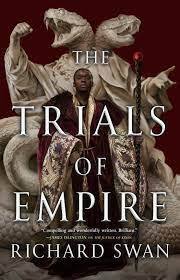 In The Trials of Empire we once again view the story through the eyes of Helena, Sir Konrad Vonvalt’s clerk-turned-retainer. Vonvalt is in a dire position as the Magistratum has been dismantled, he and his people are outlaws, and Claver is in control of a significant force of Templars with eyes on the throne. They must span the borders of the empire to find allies, allies who the emperor has spent untold lives trying to conquer and are very unlikely to want to help. And while they travel and hide and hope, waking nightmares haunt Helena, bringing dark portents and promising a far worse end for the empire than just a sword in the guts.
In The Trials of Empire we once again view the story through the eyes of Helena, Sir Konrad Vonvalt’s clerk-turned-retainer. Vonvalt is in a dire position as the Magistratum has been dismantled, he and his people are outlaws, and Claver is in control of a significant force of Templars with eyes on the throne. They must span the borders of the empire to find allies, allies who the emperor has spent untold lives trying to conquer and are very unlikely to want to help. And while they travel and hide and hope, waking nightmares haunt Helena, bringing dark portents and promising a far worse end for the empire than just a sword in the guts.
Helena’s life seems to be on the path to a very different, far more bleak outcome than she originally hoped for when Vonvalt took her from the mud and into his service. Her internal monologue first person style once again wonderfully delivers the story, always hinting at more beyond the page, and describing her complex relationship with Vonvalt and the story through the lens of an exhausted young woman who sees herself as so small and insignificant when standing next to the colossal grandiosity of dark events she is a key part of.
The slowly building, but eventually drastic change in Vonvalt and Helena’s relationship is incredibly well delivered. It shows Helena’s growth and Vonvalt delivering on his darkly prophetic words spoken in earlier books. It shows the way that life cannot be black and white, and that good people must sometimes do bad things to achieve the right outcomes for the greater good, but that this also circles back to have a profound impact on those people and their friends and families.
We go deep into the otherworldly side of Swan’s world in The Trials of Empire, peeling back the religious Neman Church’s scripting and worship layers that sit over the reality of death. This theme and delivery was one of my favourite aspects of The Trials of Empire, with the depiction of the afterlife feeding on the fallen of a battle a moment where I needed to put down the book and just take in a deep breath of sheer enjoyment.
Early on in The Trials of Empire, I was missing some of the legal procedural aspects of the first two books as Swan really gets his epic dark fantasy chops rolling off the page in impressive form. Throughout there are ruminations on topics such as the death penalty that give you a high level theoretical discourse on Sovan law and Helena’s views on it, but I did miss the lawman’s consistent procedural aspect and the legal banter that I enjoyed so much in books one and two. I needn’t have worried, however, as Swan did an excellent job of holding it back in a way that made sense in the circumstances until just the right moment in one of the most satisfying scenes in the entire book.
The Trials of Empire by Richard Swan is a morose and satisfying ending to The Empire of the Wolf trilogy. It’s as bloody as Mathew Ward’s Legacy trilogy, as enjoyable as I could have hoped for as a reading experience, and certainly leaves a door open for more of Helena’s life to be put to page. There are very few trilogies I would commit to re-reading cover-to-cover, back-to-back, but Swan’s trilogy can take its place next to The Broken Empire, The Empires off Dust, and The First Law.
Read The Trials of Empire by Richard SwanThe post REVIEW: The Trials of Empire by Richard Swan appeared first on Grimdark Magazine.
December 7, 2023
REVIEW: Creepshow #3
In Creepshow #3, we have two fetching stories that will linger long under your skin (that itch, as story one, Eternity, Eternity, Eternity, reveals, may be a race of long lived locusts). The motto of the opening story is ‘love was the carrot, and life was the stick’ and our nameless protagonist suffers the stick more than the carrot.
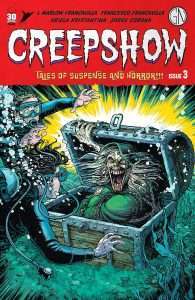 The other motto of the story is ‘beware what you wish for.’ Granting herself immortality through a one and done serum she can’t replicate, the main character recounts her now endless existence through endless cycles of Earth history. There is love, there is loss, and as she belatedly discovers at the end, there is endless boredom. In between there is the collapse of society, the rebirth under her new status as a global warlord, and then the final collapse into endless devastation.
The other motto of the story is ‘beware what you wish for.’ Granting herself immortality through a one and done serum she can’t replicate, the main character recounts her now endless existence through endless cycles of Earth history. There is love, there is loss, and as she belatedly discovers at the end, there is endless boredom. In between there is the collapse of society, the rebirth under her new status as a global warlord, and then the final collapse into endless devastation.
Writer and artist Zoe Thorogood does an excellent job of distilling the ‘immortality is really a curse’ trope down to its barebones in this opening story of Creepshow #3, and the reading experience is all the more powerful for it. And their artwork is sublime – similarly minimalist, but very impactful as well. There is a beauty to the art, which at times depicts gut wrenchingly awful body horror, but also packs a punch with regards to the reality of immortality on our poor, weak flesh. Creepshow #3 thus starts with a bang.
And happily doesn’t end with a whimper. If the first story of Creepshow #3 was the distillation of a particular trope, then story two, Sacrifices, is the distillation of all things Creepshow.
On a cruise liner, fixer Eddie has obtained a red diamond, which he is about to hand over to grasping businessman Berkman, once the funds have been transferred. Berkman’s wife, Constance, is actually in league with Eddie, and the double cross comes as a matter of course. Though Berkman doesn’t want the red diamond because he’s a dirty capitalist. He wants it as repayment to a rather unusual business partner…a cosmic business partner, as it were.
Sacrifices is Creepshow at its brightest and breeziest. This is storytelling at its most stripped down and basic. It’s fun and frenetic, but it isn’t particularly squirm inducing. The artwork by Goran Sudzuka is decent enough, but it isn’t enough to save this story from being instantly forgettable.
Creepshow #3 is definitely a mixed bag and the overall vibe of it can ride on how well you think the weaker story does its job. While I walked away feeling a little disappointed initially, in hindsight, Zoe Thorogood’s storytelling and particularly the artwork are a real plus and well worth you hunting down this issue.
3/5 stars
Read Creepshow #3The post REVIEW: Creepshow #3 appeared first on Grimdark Magazine.
December 6, 2023
REVIEW: The Night Hunt by Alexandra Christo
Atia is a killer. She is also a lost girl, one who has had to deal with grief and loss. Alexandra Christo’s The Night Hunt is high on the scale of moral greyness we love here at Grimdark Magazine. Situating itself firmly within two of the biggest trends in SFF right now – romantasy and Greek mythology – Christo’s latest oeuvre is bound to appeal to broad audiences, both genre fans and those who don’t consider themselves genre readers.
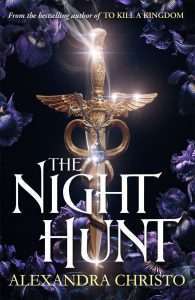 The Night Hunt features a world full of Gods and monsters – and Atia is the last of her kind. Her survival is conditional to avoiding the Gods’ notice. Silas has been forced into carrying messages and ferrying the dead as a Herald by those same Gods. As fate brings them together, they realise that they may be able to help each other. They both desire nothing as much as revenge on the Gods that shaped them, and together they may just succeed – and fall in love on the way.
The Night Hunt features a world full of Gods and monsters – and Atia is the last of her kind. Her survival is conditional to avoiding the Gods’ notice. Silas has been forced into carrying messages and ferrying the dead as a Herald by those same Gods. As fate brings them together, they realise that they may be able to help each other. They both desire nothing as much as revenge on the Gods that shaped them, and together they may just succeed – and fall in love on the way.
I loved how The Night Hunt picks up on many themes and motifs from Greek mythology while still being determinedly independent. It takes the familiarity of world building as window-dressing for a twenty-first century romantic fantasy. It feels fresh in many ways, drawing both on the comfort of known stories and the thrill of exploring new ones. It also consciously situates itself within romantasy, relying on traditional elements of romance and tropes. I do think this may be a hit or miss with the Grimdark Magazine audience – for me, the characters’ nuanced morality and the adverse circumstances ensured I was snared in. For others, romance may outweigh these elements.
Murder is a central theme, as is consideration of what is deemed to be right. Not what is lawful, but what Atia and Silas consider the best way forward, what fits into their moral compass. Tied together with a love story, this is dark … with sprinkles on top. The Night Hunt is fast-paced and exciting, a story that will draw you in completely if you give it the chance. It features a strong and humorous voice, fun characters and a story to devour. I thoroughly enjoyed this one.
Read The Night Hunt by Alexandra ChristoThe post REVIEW: The Night Hunt by Alexandra Christo appeared first on Grimdark Magazine.
December 5, 2023
REVIEW: My Brother’s Keeper by Tim Powers
My Brother’s Keeper is the latest novel from World Fantasy Award-winning author Tim Powers. Powers may be familiar to readers with a career spanning decades and scores of books to his name. My Brother’s Keeper is a gothic horror novel that follows the pattern of some of Powers’ other secret histories. It has taken inspiration from real people and events but weaves them into a supernatural world. Silvia Moreno-Garcia describes My Brother’s Keeper as a ‘decadent gothic bonbon,’ and she’s right. If you are not picking up My Brother’s Keeper because you are already a fan of Powers’ work, it is an enjoyable standalone novel and an excellent place to start exploring his fantasy work.
The historical elements in My Brother’s Keeper surround the Brontë family. Although the writings of the Brontës are mentioned, it is their biographical details that Powers’ has taken inspiration from. I am not an expert on the lives of the Brontës, not knowing much more than the sisters’ names and the rough geographical location of their home. Still, you do not need to know anything about them to enjoy My Brother’s Keeper, as Powers gives any relevant details through his writing. The main character of the novel is Emily Brontë. Although her brother and father play reasonably significant roles in the plot, the other characters are less developed and are much more minor in comparison.
Set in the Yorkshire moors in the mid-nineteenth century, with characters that most people will have a basic knowledge of, Powers jumps straight into his atmospheric gothic tale. My Brother’s Keeper is well-paced and an exciting read. If you know Powers’ writing style, you should race through this novel. However, for me, it took a few chapters to settle into the flow of the story. Powers held my attention from the outset, with some blood magic occurring at a rocky crag on the moors in the prologue. Still, I was definitely not finding My Brother’s Keeper a rapid read, even though it is only around three hundred pages long. Others have found it the opposite though, so it was more me having to settle into the read than an issue with the writing. The novel moves on from the blood magic and has family curses, monsters buried under church slabs, supernatural beasts, ghosts, and a very good dog called Keeper. If you go into My Brother’s Keeper knowing that and liking Power’s other secret history fantasy novels, you will probably have a great time reading this.
However, if you do not already know that, I think My Brother’s Keeper might be a polarising read; I can see people either loving it or loathing it. Sometimes, the plot can seem a little too weird, unlike the creepy, claustrophobic gothic novel readers might have expected. However, the cover for the US edition from Baen Books does give a little more away about the novel’s content and style than the UK version of the cover. I also think that if the Brontë name (rather than Powers’) has drawn a reader to My Brother’s Keeper, this may not be the novel for them. It is not a historical fiction of their lives, nor a reworking of their writings, or written in their style. But for me (like Marmite), it was a win overall. It may not be the sort of thing I would always reach for, but My Brother’s Keeper was an interesting take on the Brontë family and an original supernatural story. Powers’ writing is detailed and entertaining, particularly in the final chapters and the epilogue.
Thank you very much to Tim Powers and the team at Head of Zeus for sending me a copy of My Brother’s Keeper to provide this review.
3.5/5
Read My Brother’s Keeper by Tim PowersThe post REVIEW: My Brother’s Keeper by Tim Powers appeared first on Grimdark Magazine.

